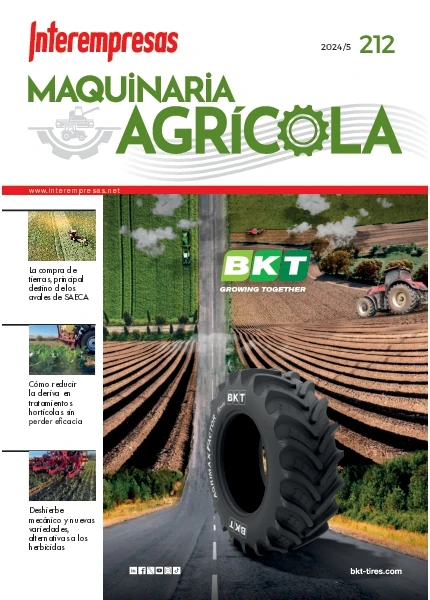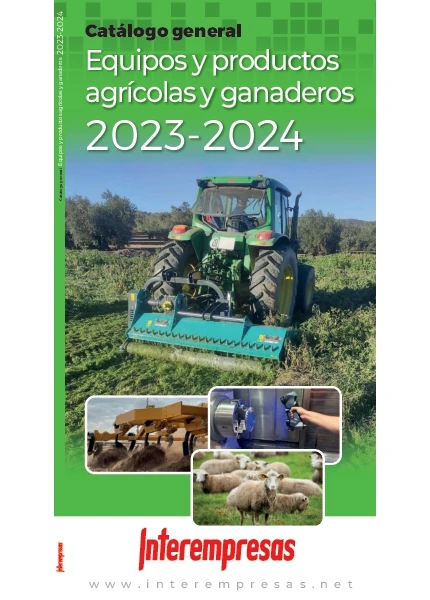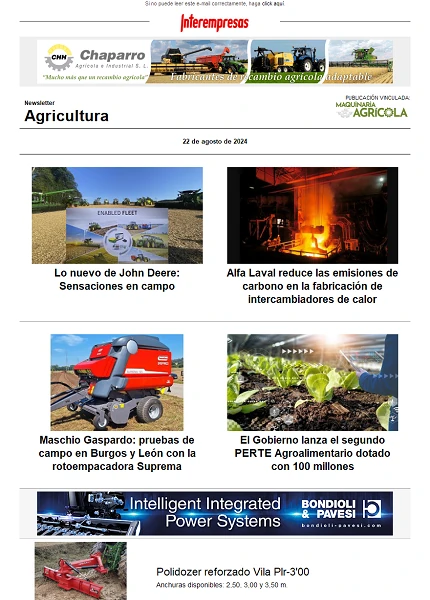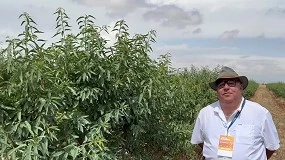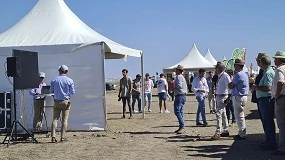This news article was originally written in Spanish. It has been automatically translated for your convenience. Reasonable efforts have been made to provide an accurate translation, however, no automated translation is perfect nor is it intended to replace a human translator. The original article in Spanish can be viewed at Evaluación del Plan Renove para la renovación del parque nacional de maquinaria agrícola
Evaluation of the Renove Plan for the renewal of the National Park of agricultural machinery
06/06/2007
on June 6, 2007
Met in the first quarter since the adoption of the Plan of aid for the renewal of the National Park of agricultural machinery, which has been called "Plan Renove", perhaps this is a good time to start making a series of assessments on it.
The 1539 RD / 2006, adopted on 15 December in Council of Ministers, and published in the Official Gazette on 10 January showed a priori as the solution more suitable (and expected), for the renewal and scrapping of obsolete Spanish agricultural machinery, with a park of machinery that exceed 800,000 units, among which more than a 50% over 15 years of age.
The improvement of economic conditions, with the upward revision of all the amounts based on casuistry that allows the aid Plan, was one of the main reasons for complaint in the application in the previous two years. This coupled with the complication of procedures required when it comes to applications made clerical many applicants and even several autonomous communities that not even issued the order to trasponía the Royal Decree.
After a consensual negotiation that has been long, complex and full of signs of rapprochement between all the sectors involved in it, the current text which so far this showing certain loopholes that were a priori not be projecting was reached.
How is the Renove Plan proving?
Since ANSEMAT and last once the euphoria of the achievement of the text is has been evaluating the application of it in an objective way and we have been seeing a number of desacoplamientos that have sought to situations that could be termed as "strange".
By suddenly approval which could be called as "surprise" of the Plan in December of last year gave rise to an "impasse" of waiting until their publication almost a month later which followed a period, call it "reflection" during which it was intended that made comments to the text applied before the transposition of the from the various regions.
These comments have been dilated at the time the publication of the aid plan in the autonomous communities in such a way that to day of today and almost three months after the publication in the Official Gazette only 8 of the 15 autonomous communities which issued the samethey have done. The madrugadora was the community of Murcia, followed on the date of publication by Balearic Islands, Castile and León, Extremadura, Catalonia, Aragon, Andalusia, Asturias and Valencia that has been the last, so far, on April 4. Surprisingly, the less, than other regions such as Castile and La Mancha or Galicia, (to name a few of the most representative as regards the agricultural fabric of the territory), not yet what they have published, as also the Canary Islands, Cantabria, La Rioja and Madrid have done. This last region already has a particularity what if it has been published has been a line of aid under regional budget, that adheres only to the regional park of tractors, without transpose RD 1539 / 2006.
As we have been seeing the texts of the lines of aid in each of the autonomous communities will have been observed, with some surprise, tangible differences between the intended budget, (located around 18 million and EUR), and the amounts published in some of the orders. In this sense some associations of farmers denounced the situation as they watched with incredulity as with the rise of the amounts that could be accessed and the low budget allocated only a minimum number of applications could be subsidized.
Having consulted the sources of funding, the amounts intended for each of the autonomous communities by the budgetary implementation of the sectoral Conference on Agriculture and Rural Development cover, as planned a large number of applications. The problem now lies in the various ministries of agriculture regional as to allocate all expected money shall be published several orders throughout the year and noting the speed when publishing line of aid that can be a problem that could result in latter case in budget items that do not they were used in this year.
The material part of this plan of aid are also finding some difficulties as a picaresque being arising effects that eventually could lead to "unwanted" is being established. We are referring to what might be termed as a "pull" machinery that remain unused, abandoned and almost achatarrada arises in the application of the renove, even being one of the objectives of the plan. The problem comes when you have "an iron" and an old tractor but that it can continue to be "used", including the first in the barter of the renove and selling the second in the used market. Another undesirable effect may be the halt in the market waiting for subsidies or indiscriminate buying second hand tractors or "iron", both domestic and from abroad, to be included in applications.
As it has happened in previous applications of this plan, it will take to the first digits in order to assess with more data.
In the bureaucratic or administrative and attached to the previous problem with regard to the transfer of vehicles, time of registration in Rome, one of the situations that are giving more problems is all matters relating to the energy rating of the Tractor, (described by the map as A or B, the eligible categories according to a scale determined by the Ministry itself). The possibility of including a premium the amount by horse on the basis of this energy rating is awakening "clashes" in applications that while some require her to dealers, others do not and other legislative texts even her cover.
Separate paragraph deserves the distinction, not always well understood, between what is commonly known as "energy efficiency" and that on the other hand is set as "emissions or environmental impact". In this case speak of two different grants, that the emissions, was established to counter the reduction in energy efficiency which means compliance with the legislation of gaseous pollutants...
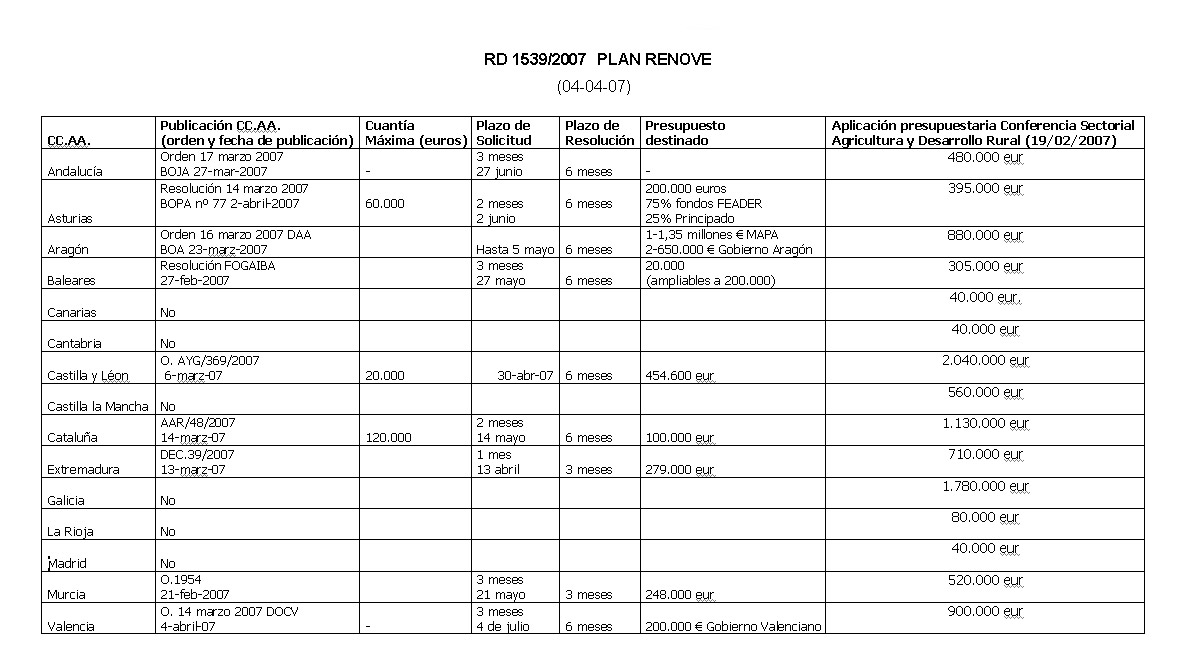
ANSEMAT works by the Renove Plan
After these three months of implementation of the new Plan of renewal of the fleet of agricultural machinery, from ANSEMAT has been a very important effort of information, awareness and labour in pursuit of the best in this line of aid.
He has been requested by all the autonomous communities quickly in the publication in the line of aid as well as aid with regard to the processing of applications as permitted in this order favouring the number of applications and an early resolution of the same.
Noting gaps in budgetary allocations for the regions that have so far been published the order information on the total amount of such has been requested and whether these will be used, so probably the monetary contribution will not be gradually throughout the year in several calls.
There is also a deep concern with regard to the machinery presented in requests, (from scrap of the second hand market or even from overseas in containers), extreme which has moved to the different administrations that will monitor with special interest. In this same field and as regards the energy classification of tractors, since the Association has seen that the classification proposed by the map is not adequate since that vehicles registered in the same in many cases are not marketed or do it with other settings to the assayed. In this way, ANSEMAT, has focused on the map and IDAE to develop an energy classification of these vehicles that can satisfy all concerned: manufacturers and importers and generally useful to all users and seekers of this and other lines of helpsall this despite the difficulty entailed in this classification in a vehicle as the tractor that has different uses and applications depending on the type of agricultural work done, the implements porte, etc.
In their eagerness to work for the viability of this Plan, from ANSEMAT has spread the hand to the Administration and to applicants for subsidies favoring the scrapping of the tractors included in requests with appropriate means for the treatment of these residues in plants suitable for this purpose, by means of the cooperation agreement which was signed last February with the map.
Related Companies or Entities
Asociación Nacional de Maquinaria Agropecuaria, Forestal y de Espacios Verdes
Instituto para La Diversificación y Ahorro de La Energía


